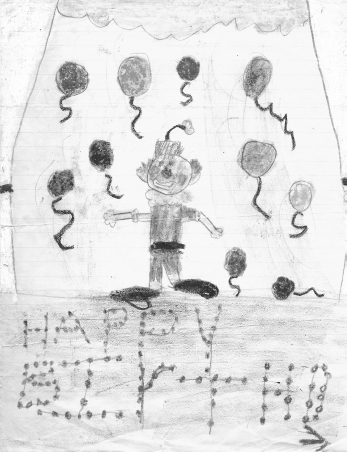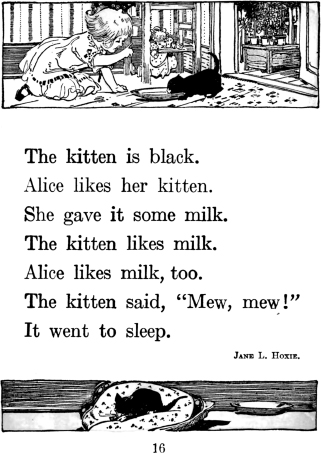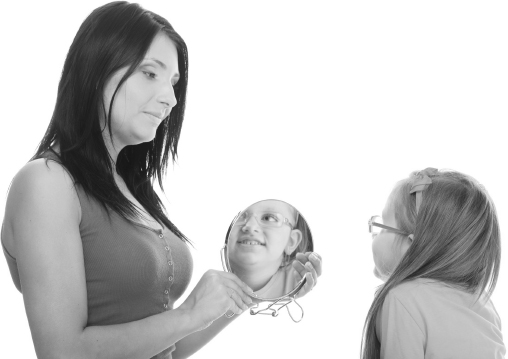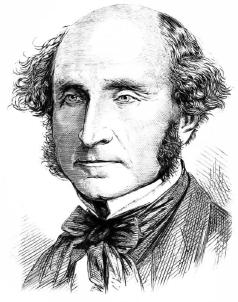Chapter 7
Preventing a Motivation Backslide
In the introduction, I cited a depressing statistic: although the average child’s attitude toward reading is positive in early elementary school, it gets more negative year by year. By puberty, the typical kid is indifferent toward reading or even feels a bit negative. The early elementary years, when children are still mostly positive about reading, is the time to think about how to prevent this decline.
What’s Happening at School
In the early elementary years, children begin to read themselves, not just to listen to others read to them. In addition, they have a classroom of other kids to whom they might compare their reading achievement. These constitute new contributors to reading self-concept and reading attitudes.
Self-Concept
Young children (say, age four or five) tend to see themselves as good at everything; they are smart, strong, and accomplished, and they are usually eager to offer evidence, such as their ability to swing really high and sing the ABC song (whether or not they actually know the whole thing). At the same time, their self-concept tends to be very concrete: being smart, for example, means being able to sing the ABC song.
As kids get older, say age seven or eight, self-concepts become increasingly abstract. Being “smart” is not just a matter of one or another accomplishment; kids understand “smart” as something that integrates many behaviors. They begin to splice diverse experiences into a narrative that describes who they are. And by this age, self-concept is no longer a frenzy of self-congratulation. Kids begin to understand that they have some positive qualities but lack others. They come to this understanding through comparison. They see that although they thought they were fast and strong, other kids can swing higher and run faster than they can (figure 7.1).

Figure 7.1. My sister’s first-grade artwork. My sister brought home drawings from first grade, and my mother thought she was a prodigy. My sister, comparing her work to her classmates, insisted it was nothing special. My mother thought she was being modest, but after attending back-to-school night (and seeing the drawings that other kids had done), my mother reported to my father, “She was right.”
Source: © Sherry Lotan.
Reading Self-Concept
Small children get their sense of themselves as readers from their understanding that reading is a family value and also from being read to and enjoying it. Whether they are a good reader does not contribute to their self-concept—they aren’t reading by themselves yet, and their self-assessments would, in any event, not be very realistic.
But in the early elementary years, kids compare their reading progress with others in the class, and that will contribute to their reading self-concept, for better or worse. These comparisons are often made easier because teachers group children of similar reading accomplishment so that they can read texts of similar difficulty. Teachers won’t call them “smarties” and “dullards,” but even first graders won’t miss that everybody in the “bluebirds” group decodes better than everybody in the “robins” group.
It’s no small matter to keep up the motivation and self-image of kids who can plainly perceive that their reading isn’t going well. The best recipe seems to be equal parts of celebration of individual children’s success, along with emotional support: acknowledgment that it’s a tough thing that he’s learning, coupled with full confidence that he can do it.
Curriculum as a Self-Concept Amplifier
As someone who came to educational research later in my career, I’m sometimes asked what surprised me most about schooling when I started researching it. What struck me was the difference in the attitudes of students in kindergarten and students in fourth grade. (I’m not talking about research here, but about my observations in classrooms.) Kindergarten students, almost without exception, are happy to be there. Naturally they get bored or frustrated with this or that activity, but they are always game for whatever comes next. Not so fourth graders. After ten minutes in most fourth-grade classrooms, it’s obvious to me which students do not view school as a place of opportunity and excitement but instead as a place where they fail and feel shame. When I’ve mentioned this observation to early elementary teachers, they often say, “You see it in fourth graders. We see it in second and even first graders.” I am sure they are right.
I think there is a tie to literacy. Consider a child who finds learning to decode difficult. It’s not lost on him that he struggles in a way that his classmates do not. Naturally this child will be dejected about reading, but consider that most of the time students spend in school is devoted to English language arts. If a student has a terrible time with reading, why wouldn’t he conclude that school is just not for him? In chapter 6, I suggested that broadening the curriculum is crucial to build general knowledge, but making more space for other subjects in kindergarten may also pay off in motivation. The child who is struggling with reading may still dread it, but he knows that science is coming later, or history, or drama, and so his academic self-image stays more positive.
Attitudes
If children start school with positive reading attitudes but these attitudes slip year by year, then we want to be darn sure we know everything we can about what factors could be leading to the slide. There has been substantial research on the two classroom factors that seem most likely to have an impact: the type of instruction the child experiences and the teacher.
Instruction and Motivation
Phonics instruction seems really boring. It’s rote memorization, devoid of meaning, and thus seems bound to make kids think reading is dull work. But research doesn’t support that reasonable supposition. The particular way kids are taught to decode—phonics or whole-word instruction—doesn’t affect attitudes. It may be that when kids are starting out, even reading disconnected words is somewhat rewarding. They might be excited to engage in this activity that they associate with older kids and grown-ups. It also may be that the materials used for whole-word instruction are not that exciting either (figure 7.2).

Figure 7.2. Whole-word reader. This page is taken from a book meant to be used with whole-word instruction. Even if your intent is that children plunge into exciting stories, they can’t recognize enough words to construct a gripping tale when they are just learning to read.
Source: From The Elson Readers, Primer (Scott, Foresman, 1920).
I don’t know of data that directly support this explanation, but some research findings are consistent with it. I said that attitudes toward reading become more negative as kids get older. Well, that happens faster for kids who have a hard time learning to read. And making kids aware that they are having a hard time (by, for example, putting them in the “slow” reading group) makes the problem still worse. So there’s some support for the commonsense idea that success in reading brings good reading attitudes.
Also, we should remember that when we compare whole-word and phonics methods, we’re comparing just one part of a broader literacy program. For example, we would also predict that including good children’s literature in a reading program would be associated with more positive attitudes, as would reading aloud to students. Both are true, and the data are copious and clear. So it may be that phonics is not all that much fun, but the cost to motivation is modest and is hard to detect among the other aspects of the literacy program, all of which affect motivation.
The Impact of the Teacher on Reading Attitudes
There’s another (probably better) explanation for why the particular method of instruction doesn’t affect student attitudes: what really matters is how the teacher implements the reading program. Studies going back to the 1960s have shown that student engagement is driven primarily by the teacher’s actions, not the program. So what does a teacher do to make students enthusiastic about reading?
She offers support at the right time to the right student in the right amount. She sets a positive emotional tone for the classroom through her enthusiasm and confidence in her students. She shows emotional sensitivity, comforting students when things go badly and at the same time expressing confidence that they can be successful. She understands how to maintain the momentum of the lesson: when to switch activities if the class is draggy, when to end a lesson if the class has had enough, and when the students can be pushed a little harder. She knows who to call on to take a leadership role on a given day. She knows how to adjust the difficulty of the lesson on the fly so that it is challenging but not overwhelming. When you start listing the skills that are involved in executing a reading lesson, you see why the teacher makes such a difference.
The truth is that if you visit your child’s classroom, it may not be obvious to you how skilled the teacher is. Look again at the previous paragraph and note the extent to which teachers must make decisions in the moment; they need to read their class (or an individual child) and act. Researchers estimate that teachers may make as many as one thousand decisions every school day. These moments are so evanescent, however, that it takes a very experienced eye to evaluate them. So what should you look for when you visit your child’s class?
Features of Great Classrooms
Reading is given a place of prominence in effective classrooms, and by that I mean physical prominence. There’s a classroom library, ideally one with a substantial collection. There are materials on the walls that are there for students to read—not just colorful posters or inspirational messages, but actual tools they will use again and again. For example, in one classroom I visited, I saw a large cartoon man, meant to help first graders make sure that their sentences were complete when they wrote: the head represented a capital letter at the start, and the feet, a punctuation mark. Other body parts represented nouns and verbs. Figure 7.3 shows another example of an effective poster.

Figure 7.3. A “word graveyard.” Each construction paper “tombstone” shows a word that students had decided was too boring to be included in their writing anymore. If they were tempted to use one of these, they had to find a synonym.
Source: © Daniel Willingham.
Second, research shows that it’s helpful when teachers model enthusiasm for reading and show children the benefits of reading. It is exciting to see the eyes of my child’s teacher light up when she discusses books. Effective reading teachers mention incidents from their daily lives that show that they read for pleasure—commenting on something from the newspaper, for example, or describing how a book affected them.
Great reading teachers create opportunities for students to see themselves as successful readers. This one is a little harder to spot. What you don’t want to see is endless praise, especially praise that focuses on performance. If you praise performance (e.g., how quickly the child reads, or how accurately) then the child will, predictably enough, focus on performance. Praising performance can result in children working to avoid failure, but you’d rather that failure be normalized. Children should view failure as an opportunity to learn something.
Instead of performance, you want your child to focus on learning. Research shows that kids are better motivated when teachers praise effort and praise children who are making choices to maximize their learning by, for example, selecting a book that is a bit challenging for them. When children get discouraged, the effective practice is to remind them that they’ve encountered obstacles before and surmounted them. The overarching principle is the same for parents and teachers: high expectations, along with confidence that the child can meet them, and the promise of support along the way. Classrooms that boost reading motivation offer opportunities for student choice. The purpose of choice is, as you’d expect, for students to feel greater ownership of and commitment to their reading. Teachers might let students decide where to read, or what to read (from a teacher-generated set of choices—a classroom library is a big help here), or perhaps how they will respond to the text (writing a report, conferencing with the teacher, and so on). Choice can go wrong, of course (e.g., if the student is allowed to choose a book with inappropriate content), but teachers are almost invariably sensitive to this danger.
What to Do at Home
It’s easy to forget about reading motivation at home in the early elementary years. There are so many new activities your child might take on—piano lessons, perhaps, or an organized sport. And school is slowly becoming more academic and requires more attention. Reading can get crowded out, especially because you figure that your child is reading at school, and your child probably likes to read when he does so. But there’s still a lot to do at home.
Keep It Up
Keep doing what you’ve been doing. It’s still important to your child’s motivation that she sees her parents and siblings reading, that there are books in the home, and so forth. If you just picked up this book and are alarmed because you have never done for your six-year-old all the stuff that I mentioned in previous chapters (e.g., reading aloud, asking questions), don’t worry; it’s not too late. There is evidence showing that starting when your child is in early elementary school is still a good idea.
How Parents Can Shape Reading Self-Concept
I’ve mentioned that at this age, children begin to compare themselves to others and that is an important determinant of self-image. Thus, self-image is not fixed. Kids change their minds about who they are as they make fresh comparisons either because their own behavior changes, their peer’s behavior changes, or they choose new people as the basis of the comparison. So if your child has a negative reading self-image, don’t give up.
Equally important, how the child thinks about his experiences counts more than the experiences themselves. Parents can guide the formation of that interpretation. For example, suppose a second grader tells his dad, “I’m no good at reading.” Our instinct as parents is to make the child feel better and to protect his reading self-esteem. The shortest route seems to be denial: “Did your teacher say you’re a bad reader? No? See, you’re doing fine.” A denial (with evidence) makes sense if the child really is doing well. But if he’s not, denial is not going to work—not for an eight-year-old. Instead, his father might give him another interpretation of what’s happened: “It’s true, reading has been tough. I think that’s because you’ve been spending so much time helping mom and me take care of your little brothers. I bet the other kids in your class have more chances to practice reading. Maybe we should do that.” The child was ready to conclude, “I’m not a reader,” but his father offers another interpretation and suggests a way for the child to address the issue (figure 7.4).

Figure 7.4. Building self-image. If you want to shape your child’s reading self-image, it’s not enough to simply draw conclusions for her and tell her what she’s “really like.” She develops her self-image by interpreting her experiences, so you must do the same.
Source: © voyagerix-fotolia.
Parents can do more than interpret experiences: they can suggest to children which experiences ought to be included in their self-narrative. Maybe your child concludes, “I’m not much of a reader,” because she’s comparing herself to her best friend, who happens to be the best reader in the class. Maybe she’s thinking of reading only as decoding and needs to be reminded that she’s always loved books, and will likely love them again, once the chore of decoding is past. Parents are often children’s only source of information about what they were like before age three or so, because none of us remember our earliest years. If your child used to enact bedtime stories with her dolls the next day, she won’t have this bit of evidence that she’s a reader unless a parent mentions it.
Your Attitude toward Your Child’s Reading
It’s obvious that your beliefs about your child’s reading ability matter—you want to convey confidence that she can be a strong reader, even if she isn’t at the moment. Less obvious is the impact of your beliefs about what reading is for. That’s worth considering for a moment.
It’s natural to think of your child’s reading as a skill, because reading does have many properties of skills. It allows you to get certain types of work done. It improves as you practice. That’s true enough, but that view of reading misses another important feature: learning how to read enables entertainment, it enables fun. Most of the skills that I teach my children lack that property. I’ve taught my kids the proper way to clean a bathroom, and I’m pretty sure I did nothing to discourage the idea that cleaning a bathroom is work, a necessary evil. It’s worth doing the right way and that brings some satisfaction, but let’s not kid ourselves: it’s work (figure 7.5).

Figure 7.5. Utilitarian view of reading. Perhaps the ultimate advocate of the utilitarian view of reading was Scottish philosopher James Mill, who raised his son, John Stuart Mill (shown here), with the specific aim of genius. John learned Greek at age three and Latin at age eight. The efforts were in some ways successful, as John is known as one of the great philosophers of the nineteenth century, but he later wrote that the intense study imposed by his father had a terrible effect on his mental health.
Source: Wikimedia Commons.
This attitude is not the one we want to communicate about reading. Reading is not something that you learn to do to be more grown up, or to succeed in school, or to get a job someday. Reading is entertainment. In the rare times that reading feels like work (as when kids are learning to decode), it’s work that will enable pleasure later. Research indicates that this attitude on the part of parents is not just associated with higher motivation to read in their children, it is associated with better reading achievement than when parents think of reading as an important school skill.
Obviously this attitude can be communicated explicitly by how you talk about reading. When your child is frustrated because she’s having a hard time, you might say, “Well, I know it’s hard, but it’s hard for everyone. It’s just something you have to learn, but it’ll get easier,” or, “You have to get this down because everything you do in school from now on will depend on it.” In contrast, you might say, “Think of how cool it’s going to be to read Cloudy with a Chance of Meatballs yourself!” or “Think how awesome it’s going to be next time we visit Grandma; this time you can read Mr. Popper’s Penguins to her!”
Less obvious messages about the nature of reading are conveyed through things you do to get your child to read. For example, suppose you say, “You are not allowed to play with my iPad until you’ve read at least one chapter in your book.” By making something the child wants contingent on reading, you’ve made it clear that reading is work. The same goes for setting a minimum amount of time that your child must read. You wouldn’t say, “I want to see you out on that swing set for at least twenty minutes today, mister. And swing like you mean it.” Similarly, no one expects a reward for doing something pleasurable. (“You did such a nice job eating that Snickers, I’m going to give you a dollar.”) We expect rewards for doing things that no one would do unless the reward were offered. (School-based reward systems for reading tend to start when kids are a little older, so I discuss them in chapter 10.)
Practice via Practical Literacy
I’m sure you weren’t eager to coerce or reward your child, but what if your child doesn’t want to read? In chapter 4, I suggested that you change your home environment so that reading is the most attractive activity available, and you can continue that practice. But once your child gains some skill in decoding, you’ve got another set of options because reading and writing can be practical. The goal is to find situations where he wants to read or write at that moment because it helps him reach a goal. Here are some examples of the kind of thing I mean:
•••••••••••••
The change wrought by learning to decode makes the early elementary years feels grand and impossible to cap. But still bigger changes are to come.
Notes
“Young children (say, age four or five) tend to see themselves as good at everything”: Harter (1999).
“They come to this understanding through comparison.”: Ruble and Frey (1991).
“The particular way kids are taught to decode—phonics or whole-word instruction—doesn’t affect attitudes.”: McKenna, Kear, and Ellsworth (1995).
“happens faster for kids who have a hard time learning to read”: Walberg and Tsai (1985).
“putting them in the ‘slow’ reading group”: Wallbrown, Brown, and Engin (1978).
“including good children’s literature in a reading program would be associated with more positive attitudes, as would reading aloud to students”: Bottomley, Truscott, Marinak, Henk, and Melnick (1999); Morrow (1983, 1992).
“Studies going back to the 1960s have shown that student engagement is driven primarily by the teacher’s actions, not the program.”: Chall (1967).
“one thousand decisions every school day”: Jackson (1968).
“Reading is given a place of prominence”: Guthrie and Cox (2001).
“it’s helpful when teachers model enthusiasm for reading”: Janiuk and Shanahan (1988).
“What you don’t want to see is endless praise, especially praise that focuses on performance.”: Mueller and Dweck (1998).
“that she sees her parents and siblings reading, that there are books in the home, and so forth”: Baker, Scher, and Mackler (1997); Braten, Lie, Andreassen, and Olaussen (1999).
“starting when your child is in early elementary school is still a good idea”: Villiger, Niggli, Wandeler, and Kutzelmann (2012).
“Kids change their minds about who they are”: Grotevant (1987).
“this attitude on the part of parents is not just associated with higher motivation to read in their children”: Baker and Scher (2002).
“it is associated with better reading achievement than when parents think of reading as an important school skill”: Baker (2003).
